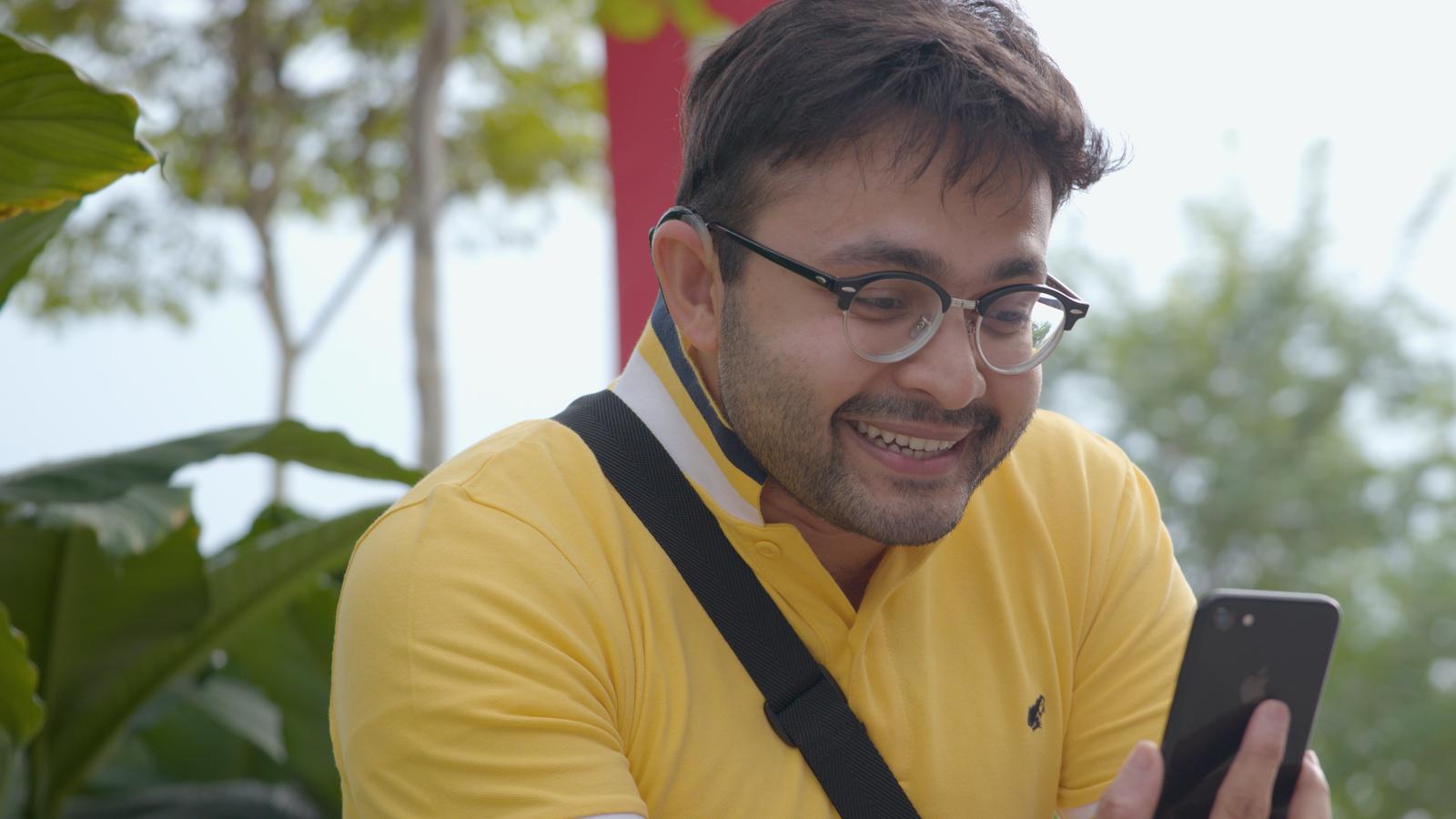Active OS implants
Learn more about how active osseointegrated steady-state implants work and how they may improve hearing for adults and children.

What you'll find on this page
- How osseointegrated steady-state implants work.
- The main components of a Cochlear™ Osia® System.
- The benefits of active OS implants.
What is bone conduction hearing?
Most people hear in two ways: by air conduction (sound traveling through the air to the ears) and bone conduction (sound passing through the bones in the head). They both work together to help us listen to and perceive sound.
Problems in the outer or middle ear can restrict sound waves from getting through to the inner ear which results in hearing loss. A common example is re-occurring ear infections or Chronic Otitis Media (COM). The underlying medical condition can be treated with surgeries, but the hearing loss remains in 30% of these cases1 and the need for repetitive surgeries is common.2
A bone conduction solution works by bypassing the blocked parts of the natural hearing pathway to help individuals hear. This may reduce the need for multiple surgeries that attempt to reconstruct the damaged part of the ear or to achieve a dry ear, an ear free of infection. They leave the ear canal free, which lowers the risk for ear infections compared to wearing a hearing aid.3,4
How active OS implants work
Active osseointegrated steady-state implants (OS implants) use the principle of bone conduction, but unlike traditional bone conduction solutions, OS implants deliver sound vibrations through digital piezoelectric stimulation.
They use an implanted component that expands and contracts within the implant to send sound vibrations through the bones in the skull directly to the working inner ear. The Cochlear Osia System features these main components:
- External sound processor that captures sound in the air - the Osia 2 Sound Processor is lightweight, durable, and features state-of-the-art connectivity options.
- Internal implant – our active OS implant, the Cochlear Osia OSI200 Implant, is placed under the skin. Its base, the Cochlear BI300 Implant, is designed to promote faster and stronger integration to the bone.5 The Piezo Power™ transducer that sits inside the OSI200 implant is designed to deliver long-term performance and durability.6
Together, these components bypass the part of the ear that isn’t working. The vibrations from the Piezo Power transducer travel to the inner ear where they are converted into electrical impulses and sent to the brain to be interpreted as sound.
What are the benefits?
Research and decades of experience have shown that bone conduction solutions may help adults and children:
- Improve your understanding of speech in quiet7 and in noisy environments.8
- Hear better, even in noisy situations.8,9
- Enjoy improved sound quality (compared to hearing aids) by bypassing the blocked part of the ear to reduce the amount of amplification needed to hear better.10
Individuals can try bone conduction solution, then decide
If adults or children have been told a bone conduction implant is a treatment option for their hearing loss, they can experience the benefits of bone conduction hearing with Baha Start, our non-surgical bone conduction solution, before deciding whether to get an implant.
They can trial a Baha sound processor with their hearing health professional or at home. This will help them experience hearing through bone conduction and feel more prepared to decide whether to get an implant.
Find a hearing implant specialist near you
Disclaimer
This material is intended for health professionals. If you are a consumer, please seek advice from your health professional about treatments for hearing loss. Outcomes may vary, and your health professional will advise you about the factors which could affect your outcome. Always read the instructions for use. Not all products are available in all countries. Please contact your local Cochlear representative for product information.
For a full list of Cochlear’s trademarks, please visit our Terms of Use page.
References
- Lewis A. Success rates in restoring hearing loss in patients with COM. Cochlear Bone Anchored Solutions AB, Sweden. 2020; D1805880.
- Berenholz L, Burkey J, Lippy W. Total Ossiculoplasty: Advantages of Two-Point Stabilization Technique. Int J Otolaryngo. 2012;346260: 9.
- Ahmad N, Etheridge C, Farrington M, Baguley DM. Prospective study of the microbiological flora of hearing aid moulds and the efficacy of current cleaning techniques. J Laryngol Otol. 2007;121(2):110–3.
- Karaca CT, Akçay SS, Toros SZ, et al. External auditory canal microbiology and hearing aid use. Am. J. Otolaryngol. 2013;34(4): 278-281.
- Nelissen RC, Stalfors J, de Wolf MJ et al. Long-term stability, survival, and tolerability of a novel osseointegrated implant for bone conduction hearing: 3-year data from a multicenter, randomized, controlled, clinical investigation. Otol Neurotol. 2014, 35(8):1486-91
- Dotevall M. Osia OSI200 Implant Technical Brief. Cochlear Bone Anchored Solutions AB, Sweden. 2020; D1602089.
- Lau K, Scotta G, Wright K, Proctor V, Greenwood L, Dawoud M, Ray J. First United Kingdom experience of the novel Osia active transcutaneous piezoelectric bone conduction implant. Eur Arch Otorhinolaryngol. 2020;277(11):2995-3002.
- Mylanus EAM, Hua H, Wigren S, et al. Multicenter Clinical Investigation of a New Active Osseointegrated Steady-State Implant System. Otol Neurotol. 2020;41(9):1249-1257.
- Goycoolea M, Ribalta G, Tocornal F, et al. Clinical performance of the Osia™ system, a new active osseointegrated implant system. Results from a prospective clinical investigation. Acta Otolaryngol. 2020;140(3):212-219.
- de Wolf MJ, Hendrix S, Cremers CW, Snik AF. Better performance with bone-anchored hearing aid than acoustic devices in patients with severe air-bone gap. Laryngoscope. 2011;121(3):613-6.



